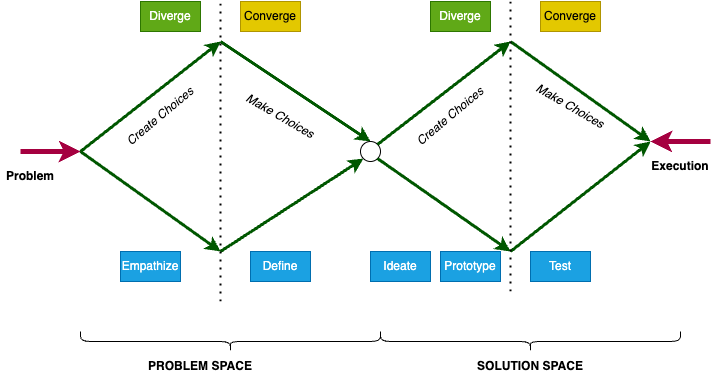
Introduction
In the earlier blogs we discussed about the Stages of Design Thinking, how to use Empathy to connect Empathy Research, how to Define the problem statement, how to Ideate, how to make Prototypes of ideas which can be potential solutions. The final stage involves testing the prototypes with the target users.
This step helps validate assumptions, gather feedback, and refine the solution further. The insights gained during testing inform the next iteration, leading to a more refined and user-centered solution.
At this stage, after the prototype is being prepared, we move to the TEST (TEST – EVALUATE – SHARE – TEST AGAIN) phase. There is a say “Prototype, as if you’re right … but TEST as if you know you’re wrong.”
Concept of T-E-S-T with example
Testing is an opportunity to learn about your solution and your users. Thus it is important to engage in a continuous short-cycle feedback process to continually improve the design.
Lets take one prototyping idea (personalised travel ternary) for business travel experience for BlogTree.in employees and run through the TEST stage.
Test (T) Stage In the Test stage, a prototype of the personalized travel itinerary concept is created. A group of BlogTree.in employees, representing different travel profiles, is selected to test the prototype. They are provided with their personalized itineraries, which include preferred airlines, seating options, and hotel amenities based on their preferences. The employees use the itineraries for their upcoming domestic trips and provide feedback on the experience, highlighting any pain points or areas of improvement.
Evaluate (E) Stage During the Evaluate stage, the feedback gathered from the employees is analyzed. Patterns and common themes are identified, such as a preference for specific airlines or challenges in the hotel booking process. Usability tests are conducted to further evaluate the effectiveness of the personalized travel itineraries in meeting the employees' needs and enhancing their travel experience. The data collected from surveys, interviews, and usability tests is synthesised to gain insights into the strengths and weaknesses of the concept.
This can also be plotted in a table to understand in detail.
| What worked? | What could be improved upon? |
| Preference for specific Airlines | Hotel Booking Process |
| Preference for specific timings | Communication of Hotel Amenities |
| … | … |
Share (S) Stage In the Share stage, the findings and insights from the evaluation of the personalized travel itinerary concept are shared with the relevant stakeholders. A presentation is conducted for travel coordinators, HR departments, and local managers, showcasing the feedback received from employees, usability test results, and any adjustments made to the prototype based on the evaluation. The stakeholders are encouraged to provide their perspectives and suggestions for further improvement.
Test again (T) Stage Based on the feedback and insights shared during the Share stage, further iterations and refinements are made to the personalized travel itinerary concept. A new iteration of the prototype is developed, incorporating the suggested enhancements, such as more flexible accommodation options and recommendations for local attractions and dining. A fresh round of testing is conducted with a different group of employees, ensuring representation from various travel profiles.
The Test is not the last stage, because Design thinking is a cyclic process. So it is very common to go back to Define stage after Test to understand if we can modify the problem statements.
In Design Thinking, one common concept is the Double Diamond. With the problem, we diverge to create choices and then converge to make choices in the Empathize & Design Stages. Then we again diverge for different set of ideas, prototype them and then converge to test. This goes in an interactive manner until we reach to the final solution.

